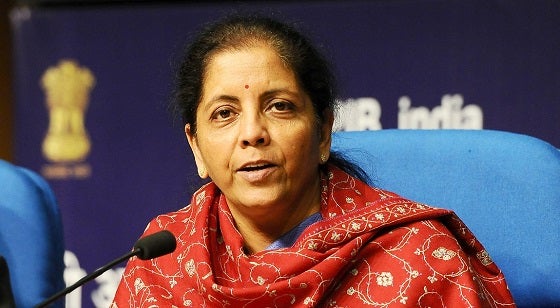Summary
Very few Indian budgets in recent years have been presented under more difficult economic circumstances than that this year. The Budget for 2020-21 chose to be expansionary to revive growth and compromised on fiscal discipline in the process. This might turn out to be a risky choice if the gross domestic product growth does not revive.
The decade’s first budget for the Indian economy was presented in the backdrop of a sharp deceleration in economic growth. Less than a month before the Budget was presented on 1 February 2020, the Central Statistical Office projected a gross domestic product (GDP) growth for FY2019-20 at five percent. This was nearly a two-percentage point decline from 6.8 per cent in 2019-20. The growth slowdown was marked across various sectors of the economy, particularly job-intensive sectors like manufacturing and construction. Economic difficulties from a weak GDP growth were compounded by rising consumer price inflation, measured at more than seven percent in December 2019.
The challenge of the budget was to revive GDP growth to a level that would generate broad-based economic activity to support jobs. This had to be through pick-up in demand – both consumption by increasing purchasing powers of people, and investment through injection of funds in infrastructure and big projects. With the clear recognition that the slowdown in the Indian economy was more structural than cyclical, the budget needed to bring in reforms. These had to be reforms in factor markets like capital, labour and land to boost production and also elsewhere in the economy to prevent financial outflows on inessential expenditure, particularly loss-making economic operations of the state.
The budget walked the expected path. It cut personal income taxes to put more money in the hands of people. It expanded allocations for almost all major ongoing schemes of the central government, particularly those on employment and infrastructure, such as the rural employment guarantee programme, income support scheme for farmers, and roads, highways and railway projects. Several tax incentives, though none very significant in terms of revenue foregone, have been offered for retail investors in the capital market, foreign investors, real estate and housing. All of these are to recharge consumption and investment demands.
A growth-oriented, expansionary budget like the one presented could not have been expected to strictly adhere to expenditure management and fiscal discipline. The Budget has deviated from the long-term target of bringing down revenue and fiscal deficits. The Indian Finance Minister has taken recourse to provisions under the Fiscal Responsibility and Budget Management Act of 2003 for deviating by 0.5 per cent from the estimated fiscal deficit target. The fiscal deficit for FY2020-21 is budgeted at 3.5 per cent of GDP while the revenue deficit is budgeted at 2.7 per cent.
The budget, therefore, decided to compromise fiscal discipline to pump more resources into the economy, in what many might feel a ‘desperate’ bid to arrest economic slowdown and revive GDP growth. Will the gamble will pay off?
The stock market has not responded positively to the budget. The benchmark Sensex of the Bombay Stock Exchange dropped by 1,000 points following the budget, wiping off substantial investor wealth. The negative reaction of the market was unexpected, as is evident from the surprise expressed by Vice-Chairman of the NITI Aayog, Rajiv Kumar. The capital market was probably expecting more aggressive reforms. The emphatic negative response does not reflect the possibility of an immediate pick-up in foreign portfolio investment inflows as well as an enthusiastic comeback by domestic investors. This does not augur well for start-ups and several micro, small and medium enterprises, which were expecting the Budget to set in motion a fresh round of resource mobilisation for their expansion, by drawing back investors to the market.
Economic growth might partly revive in the coming quarters if good monsoons produce bountiful harvests in various parts of the country. Greater supplies might soften some of the current inflation in food prices. Coupled with the support the government is continuing to provide through rural employment and farmer income schemes, there might be a pick-up in rural demand. However, such prospects are unlikely to be lasting as they will remain prone to seasonal aberrations in supplies. Moreover, beyond the rural economy, the budget does not appear to have delivered anything that would revive prospects for critical job-intensive sectors like manufacturing and construction. More details are awaited on the scheme for encouraging manufacture of ‘networked’ products such as mobile phones and electronic items. Similarly, apart from announcing the intention of developing districts as ‘export hubs’, nothing concrete has been revealed as an export-promotion strategy for manufacturing.
The risks of an expansionary budget might turn out be bigger than anticipated. If expenditure management records of FY2019-20 are an indication, the deficits might turn out to be much larger than what is budgeted. Moreover, the anticipated nominal growth of 10 percent in GDP might turn out to be less, putting all calculations in a tailspin. Hopefully, the government has factored in these possibilities to avert a hard hit on fiscal management and government finances.
Dr Amitendu Palit is a Senior Research Fellow and Research Lead (Trade and Economic Policy) at the Institute of South Asian Studies (ISAS), an autonomous research institute at the National University of Singapore (NUS). He can be contacted at isasap@nus.edu.sg. The author bears full responsibility for the facts cited and opinions expressed in this paper.
-
 More From :
More From :
-
 Tags :
Tags :
-
 Download PDF
Download PDF



